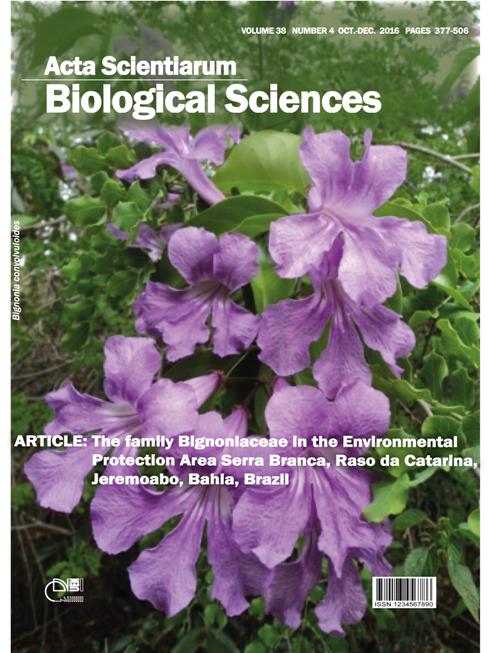<b>Sensitivity of aquatic organisms to ethanol and its potential use as bioindicators
Resumo
The aim of this research was to evaluate the feasibility for the use of the organisms Lemna minor, Azolla caroliniana, Hyphessobrycon eques, Pomacea canaliculata and Daphnia magna as exposure bioindicators for ethanol (lethal and effective concentration 50% - LC50(I)/EC50(I)). Thus, the following concentrations were used 5.0; 10.0; 20.0; 30.0; 40.0 and 50.0 mg L-1 ethanol on L. minor; 25.0; 50.0; 75.0; 100.0; 150.0 and 200.0 mg L-1 on A. caroliniana; 0.3; 0.5; 1.0; 2.0 and 3.0 mg L-1 on H. eques; 0.05; 0.10; 0.20; 0.40 and 0.80 mg L-1 on P. canaliculata; and 40.0; 60.0; 80.0; 100.0; 120.0 and 140.0 mg L-1 on D. magna. An untreated control was also kept for all organisms, with three repetitions. The increase in the ethanol concentration elevated the electrical conductivity and decreased the water dissolved oxygen and pH. The ethanol LC50 for L. minor and A. caroliniana were 12.78 and 73.11 mg L-1, respectively, and was classified as slightly toxic; 1.22 mg L-1 for H. eques (moderately toxic); 0.39 mg L-1 for P. canaliculata (highly toxic) and 98.85 mg L-1 for D. magna (slightly toxic). Thus, H. eques and P. canaliculata have showed good potential for the use as ethanol exposure bioindicators on water bodies.
Downloads
DECLARAÇÃO DE ORIGINALIDADE E DIREITOS AUTORAIS
Declaro que o presente artigo é original, não tendo sido submetido à publicação em qualquer outro periódico nacional ou internacional, quer seja em parte ou em sua totalidade.
Os direitos autorais pertencem exclusivamente aos autores. Os direitos de licenciamento utilizados pelo periódico é a licença Creative Commons Attribution 4.0 (CC BY 4.0): são permitidos o compartilhamento (cópia e distribuição do material em qualqer meio ou formato) e adaptação (remix, transformação e criação de material a partir do conteúdo assim licenciado para quaisquer fins, inclusive comerciais.
Recomenda-se a leitura desse link para maiores informações sobre o tema: fornecimento de créditos e referências de forma correta, entre outros detalhes cruciais para uso adequado do material licenciado.












1.png)




3.png)













